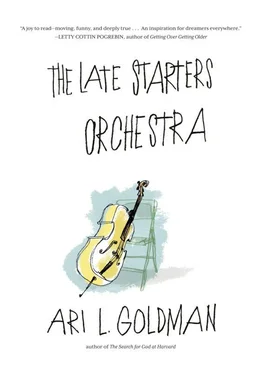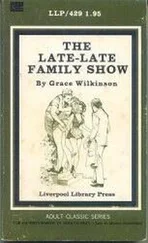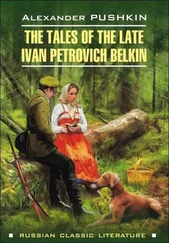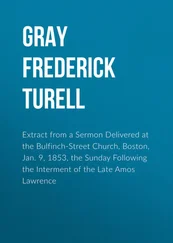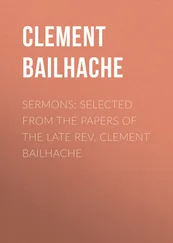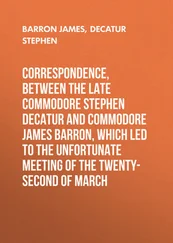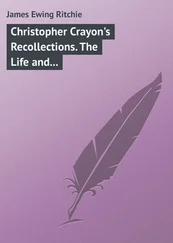“The first time I ever played with anyone it was at ELLSO in 2005,” she told me one day when we met at a Starbucks in New York’s financial district. “I was so new that I forgot I was supposed to sit down when I played!” She gave an embarrassed laugh. “I always practiced standing up. But then I looked around and everyone was sitting. So I sat, too.”
Elena loved the experience in England—“one of the great ways to spend a week,” she said — and met many new friends, people she soon came to consider her English family. The intimacy of music making, even without words exchanged, can sometimes do that, especially with your “stand partner,” the person who shares a page of music with you. “There is an instant level of trust that stand partners are compelled to establish. The vulnerability felt in the cozy confines of the teacher’s studio must all of a sudden be shared with a person you may have met only minutes before. And if this is true for experienced players, how much more for late starters.
“Everyone is very encouraging and forgiving,” she said. “Rather than slink down in your chair and make as little noise as possible, the late-starting group provides a safe environment where it is okay to let down your guard and let the music flow.”
While most of her new friends were Brits, she also made friends among other international players. She became particularly close to a late starter from Italy and another from Russia. The three of them were the foreigners at ELLSO that summer and, at one point, sat down with Chris Shurety, who was among that initial group of envious parents in the 1980s. One of his children was playing the cello back then, so he decided to try a string instrument as well. He picked up the violin. Now, all these years later, Chris urged the three foreigners to carry the ELLSO gospel to their countries. “We’ve got to take this international,” Chris said.
Elena gave it some thought upon her return to New York but the idea never got off the ground. When she returned to the summer program for a second year, Chris asked: “Any progress? You know you’ve got to do this.” By this time, another American had come to the program, a fellow New Yorker named Andrea Lockett, an editor, writer, and poet who, like Elena, was in her thirties and had discovered the violin after college.
Andrea, petite and intense, grew up in a suburban New Jersey town and spent a lot of time in the home of her grandparents. She loved to lose herself in their library, which had six thousand books on a wealth of subjects, and she became a voracious reader. Like Elena, she played competitive sports in school but, unlike her new friend, she had considerable exposure to piano and flute as a youngster. She could read music, but sports won out. Andrea spent most of her school years fencing and playing lacrosse. “Team sports were a lot more fun than doing scales and drills,” she said.
Andrea went off to the University of Pennsylvania where she studied English and worked on literary magazines. After college she wrote for medical journals and pharmaceutical companies. That kind of work “paid the bills” but her literary side was unfulfilled. She wrote poetry and volunteered at literary journals. She eventually became an editor of the New York Quarterly , which publishes poetry. Yet, her musical muse was also calling. She took up guitar at thirty-three and violin at thirty-eight.
Andrea told me about her musical life when we met at a café in Greenwich Village. She had just dropped off her young son at a day care program in a nearby church. In a story that was becoming increasingly familiar as I asked people about their music teachers, Andrea told me that she found her violin teacher, a Juilliard student named Alexandra, on Craigslist. After making contact, the two agreed to meet for their first lesson at the practice studios at the prestigious music school.
Andrea remembered approaching the Juilliard building with a sense of awe. She imagined all the great musicians who had walked those halls — and then she saw one of them. Coming out of a classroom as she was passing by was Itzhak Perlman. “Of course Perlman is immediately recognizable, with that wonderful mass of curly hair and broad smile,” she recalled. Perlman, a childhood victim of polio, was in a wheelchair and surrounded by students. “It was already exciting to be in the building, but that close encounter with Perlman was both humbling and electrifying. I was still learning how to control my bow and keep my violin from slipping off my shoulder. At the same time, I was casually walking through a space next to one of the most passionate and dedicated violinists of our time, an artist who has made a career of playing a challenging instrument despite his own physical challenges.”
Some people might have been daunted by the encounter but Andrea was inspired. She dove into her Suzuki Book 1, a text written for children, with new vigor and commitment. Barely a year into violin lessons, Andrea went to the ELLSO summer program in England, which provided another boost to her playing. ELLSO is largely made up of British retirees. Instantly, she said, she felt like a celebrity. “People were so welcoming,” she said. “They were excited to see a young person. They were excited to see an American. They were excited to see a person of color. They’d meet me on the cafeteria line and say, ‘Come, sit at our table.’ ”
At ELLSO, Andrea also bonded with Elena and they resolved, upon returning to New York, to start a New York version of ELLSO, which they dubbed NYLSO: the New York Late-Starters String Orchestra. They had no conductor, no members, and no place to play, but they were convinced that they had a potent idea. Again they turned to Craigslist. Andrea placed an ad: ADULT BEGINNER STRING ORCHESTRA SEEKS TUTOR. They called the job a “tutor” because they didn’t quite have the courage to write “conductor.” It seemed presumptuous. After all, they didn’t yet have an orchestra; how could they advertise for a conductor?
In the ad, under the section about qualifications, they listed “willing to make a weekly commitment” first and “has basic conducting skills” second. Other qualifications were “understands the difference between working with children and working with adults,” and has an ability to work with everyone from “rank beginners” to “experienced amateurs.” In return they offered a salary that was to be negotiated later.
A few days later they heard from a young Polish émigré and violinist named Magdalena Garbalinska, who was pursuing her masters in music at the Manhattan School of Music. The two organizers met with Magda at a Greenwich Village restaurant and talked about their dream. “We told her what we liked about ELLSO,” Andrea said, “and how we wanted to create a group in New York where people of different ages and different skill levels could enjoy music together. That’s a hard thing to create, especially in New York, where people expect the best.”
One thing was certain: no kids. There are already many music programs for children in New York and once you bring in children you have to deal with supervision issues and discipline and parents. Adults are motivated in a very different way. And besides, Elena said, kids learn so fast and excel in music. “They’ll put us to shame.”
Elena was right. There are a number of “intergenerational orchestras” in the United States that bring together young and old musicians. I attended a concert of one such group in New Jersey not long ago and actually felt sorry for the old folks. The kids were dazzling. The elderly plodded along. I didn’t want to be one of them. (I actually wanted to be one of the kids, but it was too late for that.)
Magda felt very much in sync with the NYLSO organizers. “I thought it went well,” Magda told me when I asked her about that initial meeting, “but then I didn’t hear from them for weeks and weeks so I thought they found someone else.”
Читать дальше
